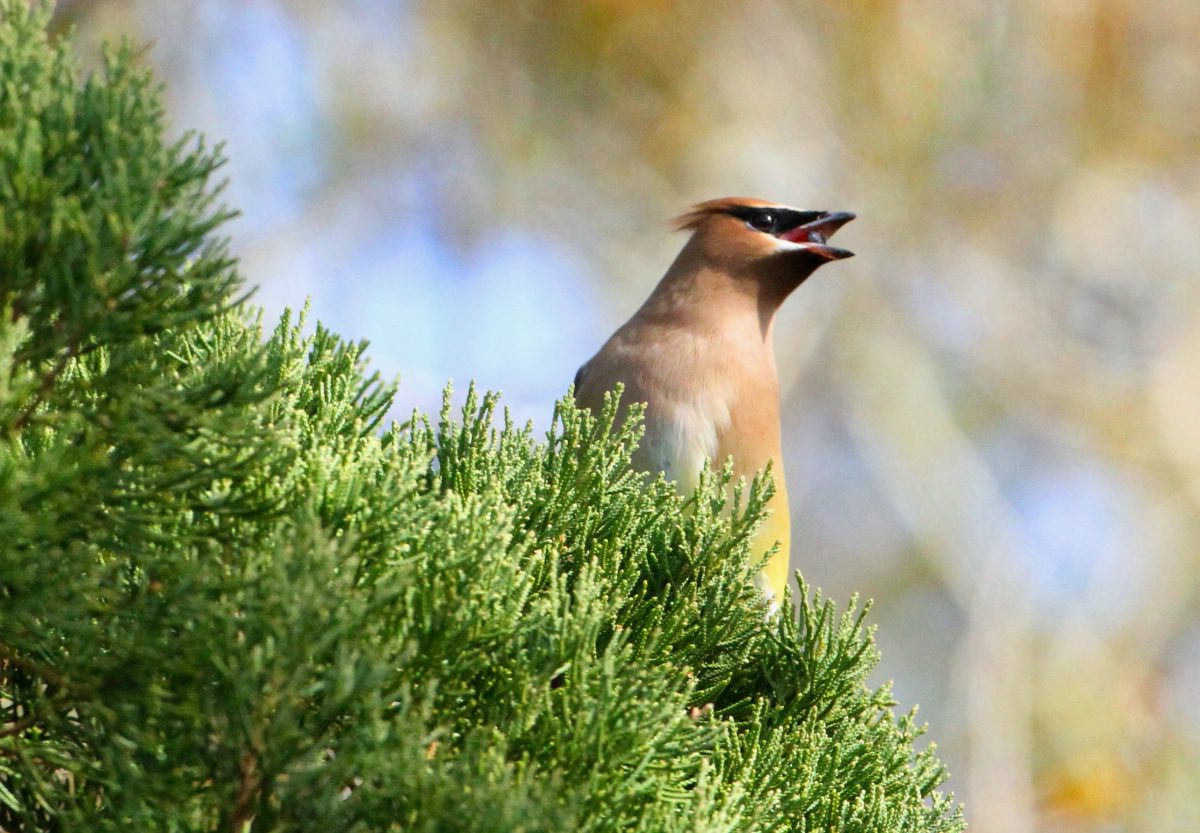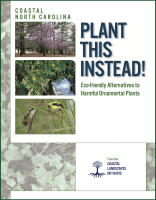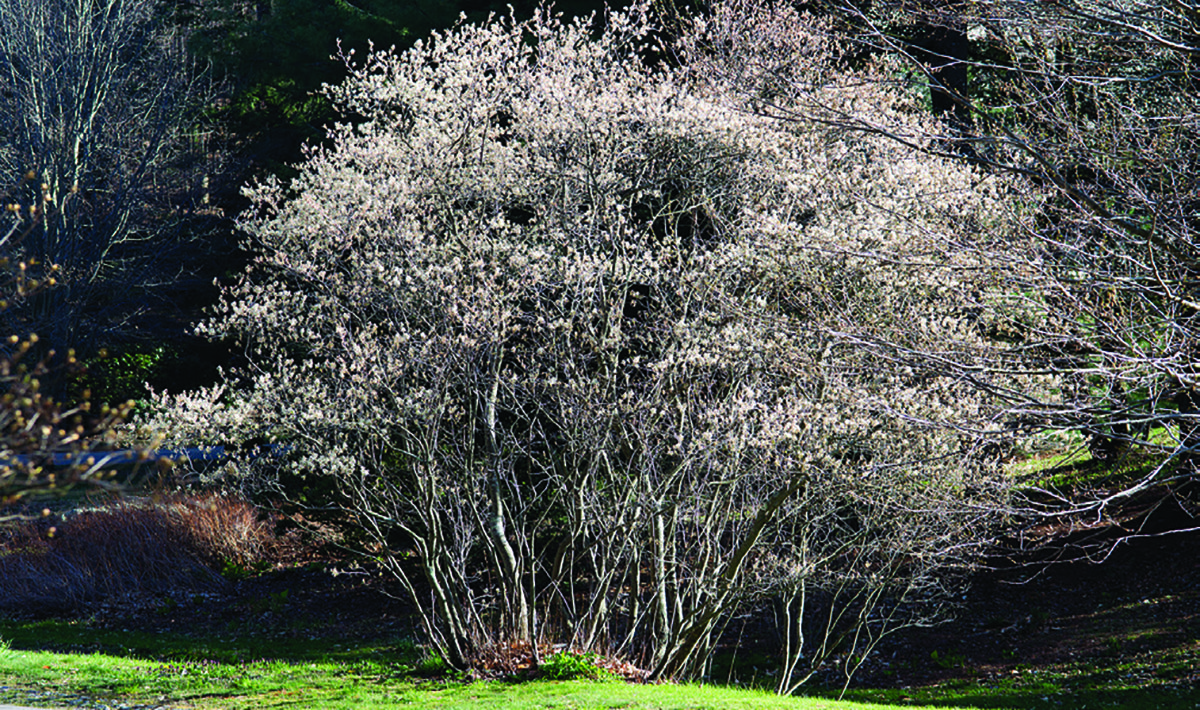
Part of a series on pollinators.
When people shop for ornamental trees, shrubs and flowers for their gardens and yards, visual appeal is usually top of mind. Chain stores and nurseries offer lots of striking choices, but often plant species native to the North Carolina coast are hard to find.
Supporter Spotlight
Biologists say that’s a problem.
It can take some effort to find a retailer selling native species, and professional landscapers often fail to include them in their designs, but these plants play a critical role in providing for bees, butterflies and other pollinators here.

Amy Mead of the North Carolina State Extension for New Hanover, Pender and Onslow counties explained to Coastal Review last week that native species are the foundations of coastal ecosystems. For insects like bees and other pollinators, native plants provide nectar, but that’s just one facet of their importance, Mead said.
“Especially for butterflies and moths, so many of our native plants are host plants for their caterpillars, and so they’re looking for these plants to lay their eggs on,” she said. “These native plants are providing the food source for those caterpillars to complete their life cycle. They are absolutely critical, and then that moves up the food chain to these birds looking for these caterpillars to be able to complete their life cycles, as well.”
It’s not an unusual sight in North Carolina: Vines of kudzu or wisteria sprawling across the landscape, reaching up, wrapping around, covering and choking the life from trees and other vegetation and creating a mess that’s not only unsightly, it’s also bad for the environment.
Supporter Spotlight
Though common, these vines aren’t native to this area, they were introduced as ornamental plants and subsequently became invasive. They’re just a couple of high-profile examples of plants that cause ill effects because they don’t belong here.
So, how can coastal property owners and landscapers avoid harmful landscaping plants? What plants native to North Carolina would be better alternatives?
A collaborative called the Coastal Landscapes Initiative has compiled a new guide of what it describes as “attractive eco-friendly plants” to substitute for commonly used “bad actors” that the initiative has identified as landscaping plants to avoid.

The Coastal Landscapes Initiative, a public-private partnership created more than five years ago to promote beautiful, functional, cost-efficient and environmentally friendly coastal landscape designs, recently released its free guide, “Plant This Instead!” The publication is available in print at county Cooperative Extension offices and online at the North Carolina Sea Grant website in PDF form.
“The Coastal Landscapes Initiative was started to find ways to promote and support landscaping practices at various scales, practices that meet our human needs and our desires, but also protect and enhance our coastal resources, resources like water quality fisheries and wildlife habitat,” said Gloria Putnam during a webinar in March that shared the title of the new publication.

Putnam, North Carolina Sea Grant’s coastal resources and communities specialist who leads the Coastal Landscape Initiative, said that the North Carolina coast has diverse ecosystems, and each has its own distinct set of plants that are naturally found here – they are native to the area.
“The type of soil, the amount of water and the temperature are really the primary determinants of the type of plant that can live in an area, and the type of plants that are there determines the kind of animals that can exist. In other words, native plants are naturally adapted to the local soil and climate conditions. These plants co-evolved with other species in the area. Some of these plants have highly specialized relationships with animals, and they work as a system,” she said.
Putnam, during the webinar, cited the cedar waxwing and the eastern red cedar as an example.
“Eastern red cedar is actually Juniperus virginiana, so it’s not a cedar at all. It’s juniper, which is why it’s important to know the scientific name,” she said. “Red cedar is very common on barrier islands, and they’re adapted to the conditions there. They’re adapted to the soil and salt aerosols and drought, and the waxwing depends on the cedar for food. And the cedar depends on the waxwing for seed dispersal.”
Invasives can be costly
A big problem with nonnative species is that they can outcompete the native plants, and often with devastating results, environmentally and economically.
According to the publication, estimates of invasive plants’ economic effects can vary. But costs to control just one ornamental species, Lythrum salicaria, commonly known as the European purple loosestrife, and the loss of forage associated with the invasive plant are estimated at $45 million each year in the 48 states where it is found.
The publication cites a 2018 University of Delaware study of residential yards in the Washington, D.C., area, which found that Carolina chickadees there could sustain their numbers only where available plants were at least 70% native species. That’s because Carolina chickadees mainly eat caterpillars that often rely exclusively on a limited number of native plant species for their food.
“A single clutch of chickadees, hatched from 3 to 10 eggs, consumes up to 9,000 caterpillars in the 16 days it takes to develop into fledglings,” according to the publication.
Native plants in coastal landscapes support numerous other birds, as well as other animals and insects, including bees and butterflies.
The guide includes alternatives for commonly used nonnative species, with options for various landscape uses, such as trees and grasses as accent plants, shrubs for foundations and borders, privacy screens and hedges and ornamental deciduous vines to add “vertical interest and flowers.”
For example, the guide suggests Amelanchier canadensi, or serviceberry, and Cercis canadensis, or redbud, trees instead of commonly used Pyrus calleryana, or callery pears, that include Bradford and other cultivars.
Bradford pears, which bloom beautifully in March along much of the North Carolina coast and are frequently featured in landscape designs here, were bred to be sterile, but because they are grafted onto other pear rootstock, which can send out suckers that flower, they can cross with other pear trees nearby.
“Bradford pears can’t crossbreed with one another but they can crossbreed with other cultivars and other pear species,” Mead said during the webinar.

Mead said the Bradford pear had become a “poster child” of good intentions. Structurally weak and “malodorous,” she said that, while it is a beautiful, spring-blooming tree, “I have heard the blooms described as (smelling like) rotting fish or urine, not something that I want to have in my yard.”
Alternatives to the Bradford pear include Cornus florida, or flowering dogwood, Magnolia virginiana, or sweetbay magnolia, and Acer rubrum, or red maple.
For shrubs, plant Ilex vomitoria, or yaupon holly, instead of Nandina domestica, or nandina.
Instead of ornamental grasses like Cortaderia selloana, or pampas grass, the guide suggests planting taller cultivars of native Panicum virgatum, or switchgrass — or Muhlenbergia capillaris, or pink muhly grass, where plant height is not a priority.
Supply and demand
So why aren’t native plants more widely available in stores here?
“It’s sort of a chicken and egg — there’s got to be a demand for the native plants in order for box stores to start carrying these, but then it goes all the way back to the supply chain. The nurseries need to have the demand from the box stores to be able to start growing these plants,” Mead told Coastal Review.
She said it’s not always easy growing native plants on a commercial scale. There’s the matter of the native seed supply, and then figuring out how to grow them.
“And then there’s the psychology, too, of what plants people will buy in the box stores. It has to look pretty and be blooming, and so there’s so much more that goes into it rather than just saying, ‘Hey, you should grow more native plants,’” Mead said.
The effort to increase awareness of the importance of native plants is so that it will drive more demand. “So people will start going into these large home improvement stores and asking for native plants and then they will start asking the growers to grow these plants as well. We’re hoping to drive that supply and demand and we’re starting with education,” she said.

Knowledge could steer folks away from what Mead calls “the starter pack of crepe myrtles and loropetalums,” plants easily found in stores and widely used – sometimes to the exclusion of all other choices – in residential landscaping.
Mead said there are so many more plants to choose from that will thrive on the coast and provide benefits to the environment. These plants can be added to established gardens, including those planted with nonnative species.
“I’m not a native purist,” Mead said. “We don’t live in a natural forest, but I would say add plants. I’m a big fan of expanding your garden beds, adding in plants. If you’re ready, if you have failing or older plants, it’s a good opportunity to plant something new.”
She advises trying to plant 70% native species, and then ornamental plants can be included as “ornaments in your yard.” Sometimes a few nonnative plants can simply bring joy.
“I have a beautiful gardenia bush that reminds me of my childhood. And so that’s something that gives me pleasure, and I can have it in my yard. It’s important that something is beautiful and gives me pleasure,” Mead said, adding that Japanese maples are similar. “Something that I really enjoy having in my garden, as well. Those are going to be beautiful, they’re not going to be invasive or cause any harm.”
Find a nursery
To find native plants, contact your county office of the N.C. State Extension, which also offers the following links to help you locate a nursery near you that sells native plants:








